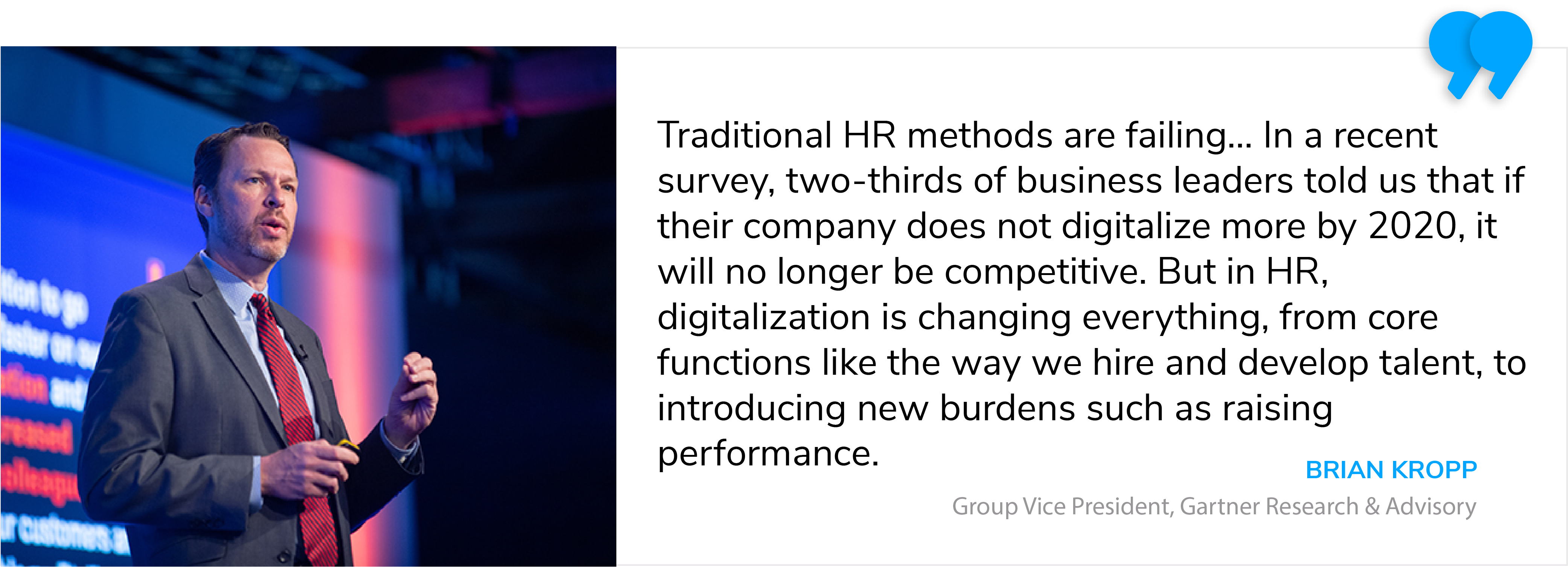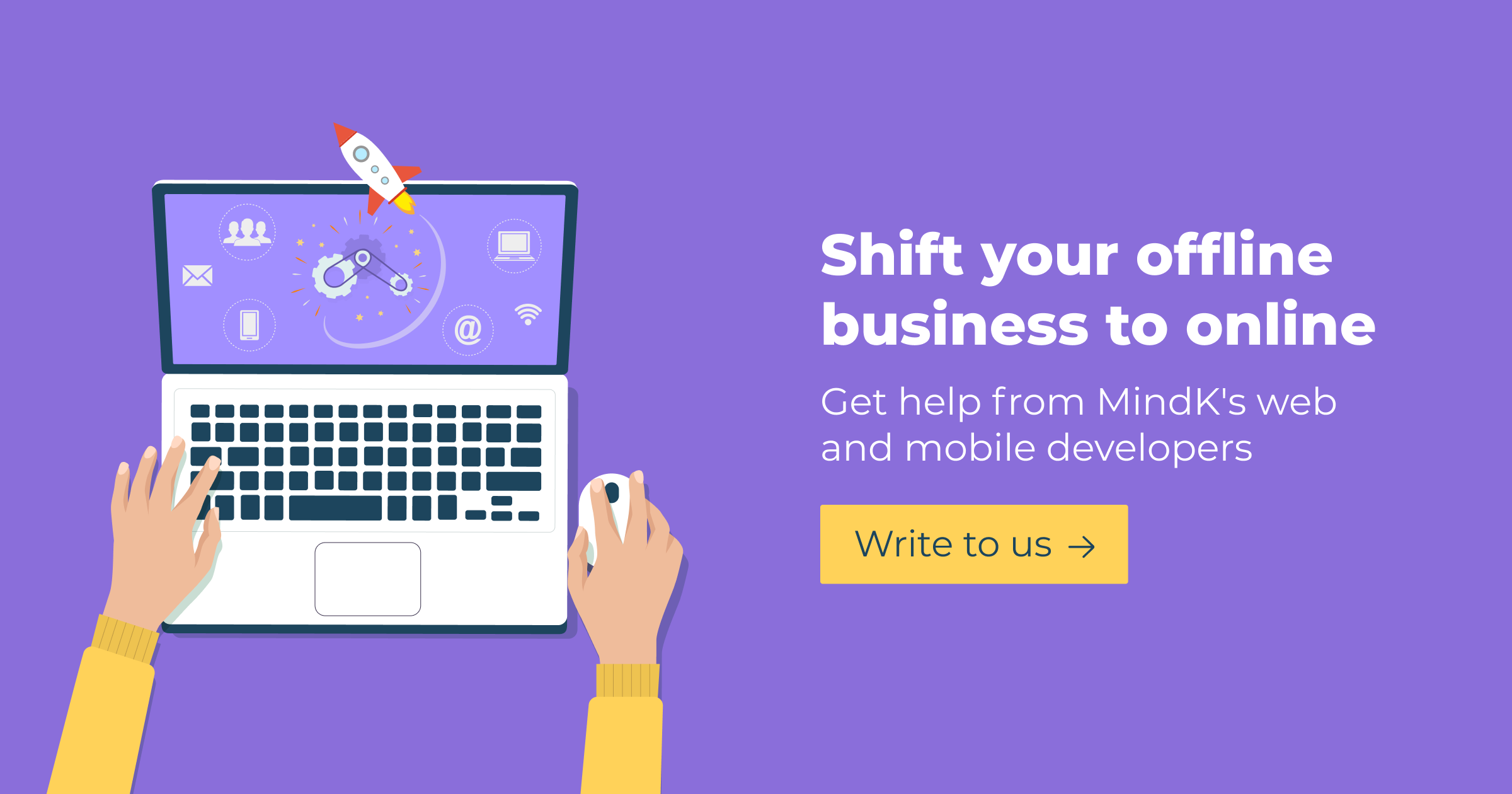Automation is a significant step for each business. An epidemic digitalization of workflows, including human resource processes, brings both hope and fear, enthusiasm and caution. In this article, we are going to clear all the blind spots and determine what process is more or less suitable for HR automation and why.
Last year KPMG International conducted a survey that involved more than 1,200 HR executives around the globe. Half of them represented the companies with 5,000 employees and 42% acted on behalf of organizations with 1 billion dollars revenue. The survey showed that more than two-thirds of human resource managers agree that the HR field is undergoing digital transformation. Nevertheless, only 40% admit they have a digital work plan in place at their company.
The reasons why most of the companies have not yet embraced automation are mostly lack of budget and resources, poor awareness about the automation process or availability of the automation systems, and the unwillingness to jump into a complicated process with many aspects to consider.
Automation can free up the HR and recruiting staff from repetitive tasks, improve data security, increase productivity, streamline analytics and so on. The numbers speak even more eloquently. On average HR managers spend 14 hours per week on manual tasks that could be automated. It is 56 hours per month. That’s a lot, multiply that by the number of months and you will get 672 hours one employee can save per year!
Here’s the flip side of the coin: for any business process, automation requires a lot of work and investment. So before your team dives into HR transformation, let’s define what processes can be left intact.
We are social beings: why human resource processes should not be fully automated
HR and recruiting business is extremely human-centric.
It is true, that a combination of people’s proficiency and powerful HR software can power up the effectiveness of human resource processes for any company. On the other hand, HR cannot be fully automated as it requires face-to-face communication, empathy, and emotions at its core.
While automation is a great option to reduce manual work in human resource processes, it cannot and should not replace HR managers completely.
For example, attempting to fully automate the hiring process, you get a risk to receive a foggy notion about the applicability of the position. Letting the automation make hiring decisions, you risk to refuse better applicants just because of a less impressive CV.
Or let’s take one to one conversations. 72% of employees believe one-on-one communication with managers to be the most important onboarding activity. Total automation of onboarding may result in a lack of employee motivation and engagement.
According to the KPMG report, 5 out of 21 responsibilities in human resources are less accessible to automation. Among them are building a high-performance work system, HR and business strategy, organizational effectiveness, change management, and employee relations.
Where to send your digitalization forces in 2021
Luckily, there are 16 responsibilities left: they can be partially or fully digitized. By automating them, HR-managers can spend less time on redundant manual work, and invest more energy into strategy and individual work with each employee.
Based on our experience in building HR software solutions for companies around the world, we’ve chosen the top-5 HR processes to focus your digital strategy this year. While they are not too complex to automate, they can bring the most added value to company growth.
#5 Time & attendance
It’s ok to track attendance in Google Spreadsheets when working in a small company that operates within one team/office/project. They are, however, ill-suited for large companies with hundreds of employees with different responsibilities.
Automating time tracking and attendance are becoming the accepted standard that simplifies not only time tracking itself, but also adds value to other business processes. For example, a system for timesheet tracking can streamline the process of creating required reports. Plus, it can be a great asset for managing workloads, billing clients, or tracking annual leave, and eliminate stress to HR managers.
#4 Talent identification and acquisition
Online talent platforms are predicted to boost global GDP by $2.7 trillion by 2025. The power of talent technology causes competition among recruiters to find and attract top talents. Today all you need to stand up in the war for talent is an arming of effective software tools.
By partially automating hiring process, companies can achieve:
- Faster candidate screening. The screening of resumes is the most time-consuming part of any recruitment process, as the number of CVs can range from dozens to hundreds. To know whether a candidate is suitable for the job, the recruiter has to open each CV, read it, organize, make notes, etc. With automation tools, a recruiter can type a few keywords, add filters, and automatically get the most relevant CVs from favorite job-platforms in a matter of minutes.
- Reduced recruiting costs. In the United States, the average cost per hire is stated to be around $4 000. If your company suffers a high turnover, the hiring process likely costs you a fortune. Cutting the time to process each candidate and making more data-driven decisions with proper automation, you can reduce the cost of talent acquisition by 50%.
- Better candidate experience. 80% of job seekers say that they are likely to take a job over another one in the case of a good relationship with recruiters or a company as a whole. Now candidates are expecting to receive notification and feedback almost immediately. You can automate this daily responsibility, using chatbots, for instance, and create a smoother candidate experience to boost your HR-brand.
#3 Analytics and metrics
Automating the analytics allows human resource managers to make data-driven business decisions.
One of the most common issues our clients have faced before automation is spending too much time on making reports, instead of brainstorming and analyzing what stands behind these numbers. While data from different sources collects in no time, reports are generated automatically in a unified form, leaving no place for human error or misunderstanding.
Automation also helps to attain a macro-level eye view on your resources. For instance, you can always track the pace of staff turnover, for example, if the number of voluntary resignations in the current year far outweighs the previous year equivalent, then management should investigate the reasons for employee terminations and how to fight the staff turnover.
One more example is analyzing absenteeism metrics. By finding out how often or how long employees are away from their jobs you provide employee engagement. It helps HR investigate the reasons behind absences and take action to improve the factors in the work environment influencing employee engagement.
#2 Payroll services
The manual payroll process is both time-consuming and inefficient. Humans make mistakes – 82 million of Americans are affected by payroll problems. The mistakes made in the payroll calculation process may cost a business owner an arm and a leg.
According to the data published by the American Payroll Association (APA), companies that have automated the payroll process managed to reduce payroll costs by 80%. In a majority, it is the result of fewer errors in invoices and issued checks.
Add to that, you can sleep soundly as you know you pay taxes correctly. The United States has more than 10,000 tax jurisdiction and many tax laws are constantly changing. You can automate tax filing as part of payroll automation to meet deadlines and escape penalties for non-compliance.
#1 Predictive modeling
The cherry on top is predictive analytics that can be a game-changer in HR. Not only does it allow you to collect and analyze the data to identify what works and what needs improvement but it also uses this data to make future predictions.
Last year’s report by Oracle stated that the HR industry uses analytics more than any other, outrunning even finance! More excitingly, human resources turned out to be more confident in using predictive analytics than other industries.
Predictive modeling is stated to involve four stages: scanning, planning, producing and predicting. It is applied for a wide range of human resource functions, among which are:
- risk modeling: building candidate profiles with high risk of leaving or performing inconsistently with requirements.
- talent forecasting: predicting which applicants or newcomers are likely to be goal-oriented, gifted employees basing on profile analysis.
- predictive retention modeling: identifying high-risk workforce, building profiles, predicting leadership and other personal needs of employees.
- response modeling: using data from the past to focus on the channels for contacting candidates that really work and refuse those that don’t.
- turnover modeling: foreseeing the future turnover of the business in different departments and countries. It benefits hiring efforts, reduces empty desk time and panic hiring and thus lowers cost and improves quality hiring.
The opportunity for HR automation doesn’t end there, the possibilities end only when you fulfill your needs. The market is now full of ready-made apps your company can use to cover specific HR functions.
Unfortunately, most of them work with particular HR processes. To automate a bunch of HR functions, you require a dozen of unrelated tools. It may result in even more effort. To tackle this problem you’ll need a robust integration between these tools OR to create custom software based on your company’s specific needs. Our clients usually opt for the latest.
Automation in action: case studies
Here are two stories of MindK clients, who are now reaping the benefits of automating some of the human resource processes.
One of them is a custom web platform for a consulting agency that advises top Norwegian companies and employees on pensions and insurance. Since Norway has a complicated pension system, the company needed a solution to simplify consulting and allow clients’ employees to make pension calculations online.
MindK team created a system that enables calculating pension payments by entering a couple of lines of data. The platform is powered by customized formulas, integrations with Aksio and Norsk Pensjon insurance systems that provide data for calculation, internal membership management systems, etc. As a result, the platform is widely used by HR managers and employees from various organizations. Just after release Innmeldt signed contracts with 3 largest Norwegian employers and received a number of other inquiries for further cooperation.
Another automation project was delivered to a Norwegian company providing job adverts, media and digital recruitment consulting. They had a website for companies and job seekers but required a complex web app to be able to connect job seekers, employers, and recruiters faster than competitors on the market.
Today the system covers the entire recruitment process from A to Z and possesses high usability. It has an admin panel and dashboard with analytics for each user role from recruitment agents to job seekers. It involves a complex CV + job post matching, which allows the most relevant applications to happen. Now the solution is known as the #1 job search platform in the country, as it achieves a number of monthly users at 25% of the country’s population.
I hope these research and success stories will bring inspiration to your workplace. In case you’re already inspired, don’t hesitate to contact us to find out more about our expertise in building automation solutions for HR and recruitment niche.








